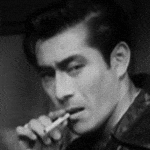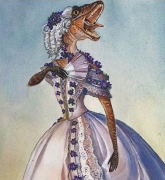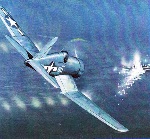|
HEY GAIL posted:They dismount. They protect themselves by running away or by fighting next to other troops; they can't hold territory on their own most of the time. From what i've read, they were very useful troops for the skirmishes and raids that dotted these wars, though this may be from past the TYW period.
|
|
|
|

|
| # ? May 10, 2024 19:06 |
|
Panzeh posted:From what i've read, they were very useful troops for the skirmishes and raids that dotted these wars, though this may be from past the TYW period.
|
|
|
|
OwlFancier posted:Hard to drive straight is not "incapacitates its crew when left unpowered through spinning" I've made no claims about the guns making the ship do anything. I've purely been referencing the ship spinning and rocking so as to make the crew sick in light to moderate seas. Which BTW barges are notorious for. These Russian flat bottomed round ships will be no different and as pointed out the rudder will be almost useless for keeping the craft pointed into the oncoming seas exacerbating the issue. I've conned ships in a storm where you are using the rudders and engines to keep the bow into the waves. It's a LOT of work in a well made ship with modern throttles and control, the Novgorod would be impossible to keep into the sea and thus will spin and bob like another round thing famous for spinning and bobbing called a cork. The issue with being swept out with the tide is also something that used to happen commonly with river barges. The river traffic being swept out to sea was a MASSIVE problem on the Thames until very recently. It may not have happened in this specific case but it is something that the crew would have had to have been in constant vigil of preventing and anyone critiquing the vessel would have been right to point it out.
|
|
|
|
MrYenko posted:Cool article about war-rhinos: Cool link, thanks
|
|
|
|
The 1995 documentary Operation Dumbo Drop illustrated the strategic importance of elephants with regards to relations with indigenous populations.
|
|
|
|
Panzeh posted:From what i've read, they were very useful troops for the skirmishes and raids that dotted these wars, though this may be from past the TYW period. For Napoleonics they were quite useful as anti-partisan troops. Partisans don't stand up well to actual disciplined infantry even in small numbers but they are really hard to catch. A dragoon company can cover and pacify a lot more territory than an infantry company. But dragoons can't really compete with infantry in a stand up fight because the carbine is a lot less accurate and they have to worry about managing the horses - standard was to leave a couple guys behind in each troop to mind horses when fighting dismounted. Confusing the whole picture is that dragoons were kind of obsolete at this point except for irregular warfare so a lot of legacy dragoon-titled regiments were just actually pistol and arme blanche cavalry.
|
|
|
|
Yeah everything I've ever read about Napoleonic dragoons is that they were essentially just cavalrymen in a big pitched fight.
|
|
|
|
|
Napoleons dragoons were originally supposed to be men who were small enough to ride two to a horse. They were supposed to ride to where they were needed dismount and fight as infantry. I don't think the two to a horse thing lasted very long in practice though. Being small statured did though, mostly because it's less tiring on the horse (i.e. Light cavalry). Cuirassers though were supposed to be big. Big horses and big people in strong armor (hence heavy cavalry) and they were supposed to charge in and lay the smack down.
|
|
|
Murgos posted:Napoleons dragoons were originally supposed to be men who were small enough to ride two to a horse. They were supposed to ride to where they were needed dismount and fight as infantry. On the other hand I know at least the Austrian cavalry had the same size standards for horses between dragoons and cuirassiers and organised it at the beginning of the war as heavy cav, they carried a straight heavy pallash, and their carbine was a kilo heavier than the hussar carbine. Plus they and the British at least maintained a difference between light dragoons (cheveaulegers) and dragoons. Disinterested fucked around with this message at 00:37 on Sep 3, 2017 |
|
|
|
quote:at Aspern: it was with Brig. Clary, Div. Kienmayer or Reserve Corps. The regiment was in the first line and defended the front against the French Guards “ŕ cheval”. At Aspern it lost 14 men and 95 horses dead, 24 prisoners and 119 wounded. After the battle it was able to re-organize only two divisions (4 Sqns.) Not a good time for the 2nd Austrian regiment of dragoons eh.
|
|
|
|
|
My mistake. I was thinking of Voltigeurs who were supposed to be small enough to ride into battle as a second person on a horse. Dragoons were always on large horses and initially carried the voltigeurs into battle.
|
|
|
|
Polish 37 mm anti-tank gun Queue: T-37 with ShKAS, Wartime modifications of the T-37 and T-38, Tank destroyers on the T-30 and T-40 chassis, 45 mm M-42 gun, SU-76 prototype, ZIK-7 and other light SPG designs, SU-26/T-26-6, SU-122 precursors, SU-122 competitors, Light Tank M5, Medium Tank M3, Tankbuchse 41, s.FH. 18, PzVII Lowe, Tiger #114, Chrysler K, A1E1 Independent, Valentine I-IV, Swedish tanks 1928–1934, Strv 81 and Strv 101, Pak 97/38, 7.5 cm Pak 41, Czechoslovakian post-war prototypes, Praga AH-IV, KV-1S, KV-13, Bazooka, Super Bazooka, Matilda, 76 mm gun mod of the Matilda, Renault FT, Somua, SU-122, SU-122M, KV-13 to IS, T-60 factory #37, D.W. and VK 30.01(H), Wespe and other PzII SPGs, Pz38(t) in the USSR, Prospective French tanks, Medium Tank M7, Churchill II-IV, GAZ-71 and GAZ-72, Production and combat of the KV-1S, L-10 and L-30, Strv m/21, Landsverk prototypes 1943-1951, Pz.Sfl.V Sturer Emil, PzII Ausf. G-H, Marder III Available for request:  IM-1 squeezebore cannon  25-pounder  105 mm howitzer M2A1 15 cm sIG 33 10.5 cm leFH 18 Tiger study in the USSR NEW PzII Ausf. J NEW  47 mm wz.25 infantry gun NEW Strv m/40 Strv m/42 Strv m/21 Strv m/41 pvkv m/43
|
|
|
|
When do Chariots stop being a thing in warfare and why would you have chariots instead of horse cavalry if they exist at the same point.
|
|
|
|
https://twitter.com/abc13houston/status/903791617793982468/photo/1 Street sword == relevant; I assume halberds are included
|
|
|
|
Nebakenezzer posted:Street sword == relevant;
|
|
|
|
KildarX posted:When do Chariots stop being a thing in warfare and why would you have chariots instead of horse cavalry if they exist at the same point. Chariots came before horses. The tackle and training, both for horse and rider, are totally different for draft animals and ridden animals. Once horseback riding became widespread chariots rapidly fell from favor as anything but command vehicles in a military context, although they continued to be used as transport and prestige items.
|
|
|
|
KildarX posted:When do Chariots stop being a thing in warfare and why would you have chariots instead of horse cavalry if they exist at the same point. You can stand up in a chariot, which allows you to do more stuff than you can on a horse without a lot of practice. Also chariots can be pulled by horses unsuitable for riding.
|
|
|
|
Disinterested posted:Yeah everything I've ever read about Napoleonic dragoons is that they were essentially just cavalrymen in a big pitched fight. You've definitely got to keep in mind the distinction between functional dragoons (carbine armed mobile infantry) and the various things that were called dragoons but weren't. The latter was a lot more common in Napoleonic wars, usually heavy cavalry variants and heavy cavalry armed with carbines but intended to fight in large part on horse.
|
|
|
|
Wouldn't the American civil war be an indication of the potential value of cavalry as an infantry force, on occasion?
|
|
|
|
|
Disinterested posted:Wouldn't the American civil war be an indication of the potential value of cavalry as an infantry force, on occasion? How so?
|
|
|
|
At what point in warfare were you more likely to die a violent death due to ranged weaponry than due to melee weaponry?
|
|
|
KYOON GRIFFEY JR posted:How so? I have the vague sense they were used that way more often then than in say the Napoleonic wars.
|
|
|
|
|
Don't think so. Buford's men fought afoot in the early stages of Gettysburg, but as far as I know most of the other cavalry actions were fought mounted.
|
|
|
|
|
VanSandman posted:At what point in warfare were you more likely to die a violent death due to ranged weaponry than due to melee weaponry? Probably depends where you were and what you were doing and who you were fighting, the Romans employed rapid fire miniature ballistae in what I can only describe as a similar manner to a modern heavy machinegun, to provide supporting fire from elevated positions. Archery was employed by different people to very different degrees over antiquity, Japan began to employ gunpowder armed troops earlier than Europe, before the advent of handheld gunpowder weaponry, artillery was still considered extremely important to the successful prosecution of a war, and as late as the first world war, melee combat was pretty integral as it turns out that repeating rifles aren't much use in storming a fortification. The progress of ranged combat is not super linear or evenly distributed though once people started making matchlock muskets en masse and equipping armies with them, that's probably your near-global tipping point as it proliferated quite a lot, as that was also the time people started really connecting up the globe and also developing mass production techniques which enables the production of large volumes of complex metalwork, though it took some centuries for it to proliferate to everywhere, often as a result of the gun-using colonial powers invading, occupying, and raising new colonial armies from the locals and arming them with guns and gun tactics.
|
|
|
|
Could you classify horsedrawn cannons as a kind of chariot?
|
|
|
|
Of course not! Because... Huh. I'm not actually sure what part of the technical definition of "Chariot" would disallow that.
|
|
|
|
|
I mean you don't stand on the cannon in transit I don't think?
|
|
|
|
Grand Prize Winner posted:Wait, if they're that susceptible to dying after they deployed, why were they preferred over horses, camels, donkeys, oxen, any other kind of livestock? Were they really useful for hauling stuff/fighting battles? I think generally they were used in concert with all those other animals. However because you can't breed them and procuring/keeping them is so expensive they're a scarce resource. One that brings a whole different set of capabilities to an army than other animals. There's a classical Indian text that laid out their basic function on campaign, and I don't think it changed much until firearms appeared. The Arthashastra by Kautilya; circa 2nd century BC posted:[The functions of elephants in war are] acting as the vanguard of a marching army. . . , preparing roads, camping grounds and landing ghats in rivers. . . , clearing away such impediments as small trees and shrubs. . . , battering down walls, gates and towers of a fortress. . . , and breaking up, scattering or trampling down the hostile force. KildarX posted:When do Chariots stop being a thing in warfare and why would you have chariots instead of horse cavalry if they exist at the same point. I swear to god I read a book which explicitly referred to their use in Tang Dynasty China as late as the eighth century AD, but I've never been able to find the reference again. They were only used in the western desert where conditions were ideal for chariot riding but I can't recall anything else.
|
|
|
|
Disinterested posted:Wouldn't the American civil war be an indication of the potential value of cavalry as an infantry force, on occasion? I don't think there was a consistent theme in the ACW. I don't recall any instances of cavalry charging line infantry while mounted, for example, they mostly fought cavalry while mounted but would dismount when assaulting enemy positions. EG. Fort Pillow. The Union had a unit of guys that rode donkeys and used axes and repeating rifles, they fought as infantry because they were literally infantry who were given donkeys so they could get to where they were going faster.
|
|
|
|
KildarX posted:When do Chariots stop being a thing in warfare and why would you have chariots instead of horse cavalry if they exist at the same point. Squalid posted:I swear to god I read a book which explicitly referred to their use in Tang Dynasty China as late as the eighth century AD, but I've never been able to find the reference again. They were only used in the western desert where conditions were ideal for chariot riding but I can't recall anything else. China's a good example for the later question, although I expect similar stuff happened elsewhere- chariots were simply more prestigious than horse cavalry, and prestige is something that takes a lot of motivation to overcome. They were old and vaunted and steeped in tradition and glory, whereas riding on a horse directly was what those barbarians in the north did. Chinese states didn't start switching over to cavalry until something like ~300 BC, late in the Warring States, even though they'd been aware of horseback riding for centuries at that point. And it still wasn't without a huge amount of resistance from the nobility that it happened.(I vaguely remember it having to be a royal decree to get the nobles to switch, even, although I'm not confident of that fact.)
|
|
|
|
Koramei posted:China's a good example for the later question, although I expect similar stuff happened elsewhere- chariots were simply more prestigious than horse cavalry, and prestige is something that takes a lot of motivation to overcome. They were old and vaunted and steeped in tradition and glory, whereas riding on a horse directly was what those barbarians in the north did. Chinese states didn't start switching over to cavalry until something like ~300 BC, late in the Warring States, even though they'd been aware of horseback riding for centuries at that point. And it still wasn't without a huge amount of resistance from the nobility that it happened.(I vaguely remember it having to be a royal decree to get the nobles to switch, even, although I'm not confident of that fact.) "We've always done it that way" is a thing that crops up repeatedly in military history and often requires a resounding massacre of the people who always did it that way by the people who do it the new way before people catch on.
|
|
|
|
OwlFancier posted:"We've always done it that way" is a thing that crops up repeatedly in military history and often requires a resounding massacre of the people who always did it that way by the people who do it the new way before people catch on. I don't think this is really true. Maybe that's more of a thing in the modern era, but I know that at least in medieval military historiography, the idea of This One Weird Trick For Victory, Knights Hate It has been pretty thoroughly discredited and thrown out the window. The stereotype of the hidebound medieval aristocrat who will not abandon traditional ways of warfare and is punished for his arrogance is pretty much a myth. It's always very convenient to claim that you are a heroic innovator and that anyone opposed to your ideas is merely a stodgy old fool, but I think it's just as often that massive structural forces shape military efforts in particular ways and it's very difficult to alter that quickly or easily.
|
|
|
|
Well yeah I'm not trying to say it's individuals doing it, I mean literally that military forces rely heavily on previous experience and don't tend to just rewrite their way of fighting on pure theorycraft, which makes them institutionally slow to adapt unless they're actually in a war and looking for an advantage (in recent history this can take the form of either technological progress mid-war or practical use of previously developed technology providing innovative ways to use it in the field), or unless they run into someone else who has already figured out something better and end up fighting them. So not adopting cavalry for example has a lot to do with the fact that everyone in your army knows how to do chariots and has always done chariots and thus all of your institutional experience is with chariots and presumably all your neighbours who you seriously scrap with also do chariots. You can't just magically import the knowledge of cavalry by throwing 50 gold at your chariots to upgrade them to horsemans, but if you encounter someone who does employ cavalry to great effect against you, this gives you both a demonstration of its effectiveness and also a potential source of experience with it which you can use to fold it into your own army, or alternatively you get conquered by them and they deposit that fighting tradition into your part of the world that way. OwlFancier fucked around with this message at 06:03 on Sep 3, 2017 |
|
|
|
OwlFancier posted:Probably depends where you were and what you were doing and who you were fighting, the Romans employed rapid fire miniature ballistae in what I can only describe as a similar manner to a modern heavy machinegun, to provide supporting fire from elevated positions. Archery was employed by different people to very different degrees over antiquity, Japan began to employ gunpowder armed troops earlier than Europe, before the advent of handheld gunpowder weaponry, artillery was still considered extremely important to the successful prosecution of a war, and as late as the first world war, melee combat was pretty integral as it turns out that repeating rifles aren't much use in storming a fortification. Even in Japan you were more likely to be wounded and potentially die from arrows than by anything else well before the invention of gunpowder. I've read an estimation that about three-quarters of all wounds in the Kamakura period were arrow related. How many of these ended up killing you was questionable because I don't think they recorded the numbers for that - and it's important to note that dying from an arrow wound and dying from being 'shot to death' were considered to be distinct from one another.
|
|
|
|
Molentik posted:Que that one picture of the traiterous elephant helping a nazi car get out of the mud. That's the one they executed at Nuremberg right? vvv hot drat. RIP in peace poor hanged elephant though. Milo and POTUS fucked around with this message at 07:33 on Sep 3, 2017 |
|
|
|
Milo and POTUS posted:That's the one they executed at Nuremberg right? No, Goering killed himself in his cell before they could hang him.
|
|
|
|
OwlFancier posted:"We've always done it that way" is a thing that crops up repeatedly in military history and often requires a resounding massacre of the people who always did it that way by the people who do it the new way before people catch on. Counterpoint: the Royal Navy being so eager to adopt new technology in the late 19th century that they went all-in on ramming being the dominant tactic in modern naval warfare after a single battle where ramming played a role.
|
|
|
|
Gnoman posted:Don't think so. Buford's men fought afoot in the early stages of Gettysburg, but as far as I know most of the other cavalry actions were fought mounted.
|
|
|
|
Right now is a really interesting time on the technological change front because we're heading towards the era of air/land/sea drones that can act autonomously on a battlefield that's so saturated with EW that you can't possibly expect to maintain direct control of them.
|
|
|
|

|
| # ? May 10, 2024 19:06 |
|
KYOON GRIFFEY JR posted:For Napoleonics they were quite useful as anti-partisan troops. Partisans don't stand up well to actual disciplined infantry even in small numbers but they are really hard to catch. A dragoon company can cover and pacify a lot more territory than an infantry company. But dragoons can't really compete with infantry in a stand up fight because the carbine is a lot less accurate and they have to worry about managing the horses - standard was to leave a couple guys behind in each troop to mind horses when fighting dismounted. Yeah uh by the Napoleonic period dragoon is just a word for heavy cavalry, and as such they were not obsolete at all. Anti partisan stuff was more a task for light cavalry eg hussars.
|
|
|


























